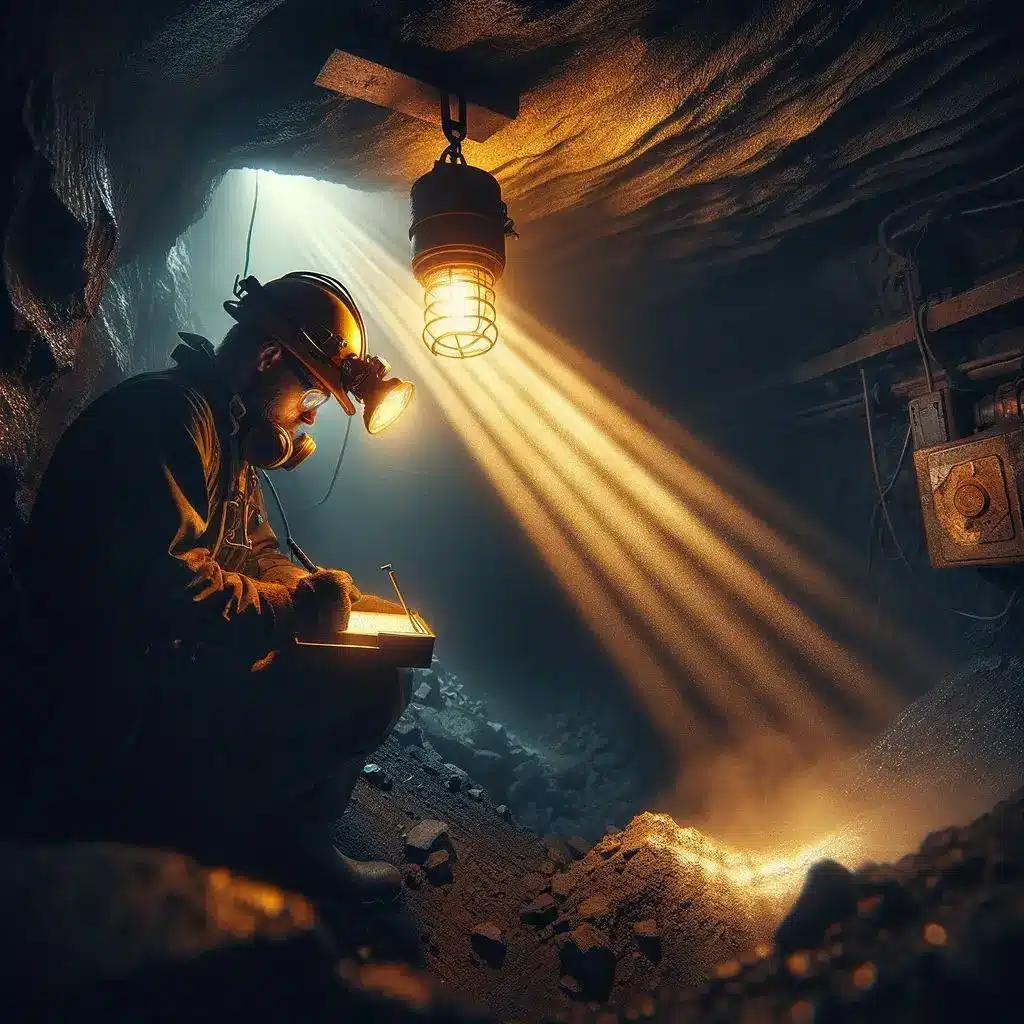In industries where flammable gases, vapors, or combustible dust are present, selecting the right lighting solution is crucial to prevent fires or explosions. But how do you know if a light is truly explosion-proof? In this article, we’ll explore the essential characteristics of explosion proof lamps and provide guidance on how to identify and choose the appropriate lighting for your hazardous environment.
Understanding Explosion Proof Lighting
Before we dive into the specifics of identifying explosion proof lights, let’s first understand what makes a light fixture explosion-proof.
What is an Explosion Proof Light?
An explosion proof lamp is a specially designed lighting fixture that prevents the ignition of explosive atmospheres. These lights are constructed to contain any internal explosions and prevent the propagation of flames or sparks to the surrounding environment. Explosion proof lights must meet stringent safety standards and undergo rigorous testing to ensure they can withstand the challenges of hazardous locations. Read more about Hazardous Environments here.
The Importance of Explosion-Proof Lighting in Hazardous Environments
In industries such as oil and gas, chemical processing, mining, and grain handling, the presence of flammable substances creates a significant risk of fires or explosions. Even a small spark from a non-explosion proof light can ignite these substances, leading to devastating consequences. That’s why using explosion proof lamps is essential in these environments to ensure the safety of personnel and facilities.
Identifying Explosion Proof Lights
Now, let’s delve into the key factors that help you determine if a light is explosion-proof.
Certifications and Markings
One of the most reliable ways to identify an explosion proof lamp is by looking for appropriate certifications and markings. Explosion-proof lights must meet specific standards and carry certifications from recognized authorities. Some common certifications to look for include:
– UL (Underwriters Laboratories) Class I, Division 1 or 2
– ATEX (ATmosphères EXplosibles) Certification
– IECEx (International Electrotechnical Commission Explosive) Certification
These certifications indicate that the light has been tested and approved for use in hazardous locations. The marking on the light fixture should clearly state the certification and the specific hazardous environment it is suitable for. Read more about Understanding the Explosion-Proof Lighting Standard: Ensuring Safety in Hazardous Environments here.
 |
Construction and Material
Another key aspect of explosion proof lights is their robust construction and the use of appropriate materials. Explosion proof lamps are designed with heavy-duty enclosures, typically made from cast aluminum, stainless steel, or other durable materials. These enclosures are carefully sealed to prevent any gaps or openings that could allow sparks or flames to escape.
Additionally, explosion proof lights often incorporate reinforced glass or polycarbonate lenses that can withstand high impact and extreme temperatures. The wiring and connections are also specially designed to minimize the risk of electrical sparks, with the use of explosion-proof conduits, seals, and junction boxes. Read more about Are LED lights explosion proof? here.
Thermal Management
Effective thermal management is crucial for explosion proof lamps. In hazardous environments, excessive heat can be just as dangerous as sparks or flames. Explosion-proof lights are engineered with heat sinks, cooling fins, or other thermal management solutions to dissipate heat effectively. These features ensure the light operates within safe temperature limits, even in demanding conditions.
Selecting the Right Explosion-Proof Lighting Solution
When choosing an explosion proof lamp for your specific application, consider the following factors:
- Hazardous Area Classification: Determine the classification of your hazardous environment (e.g., Class I, Division 1 or 2) and select a light that is certified for that specific classification.
- Light Output and Distribution: Consider the required light output and distribution pattern for your application. Explosion proof lights come in various lumens output, beam angles, and distribution options to suit different needs.
- Mounting and Installation: Evaluate the mounting and installation requirements of the explosion proof lamp. Ensure that the light can be securely mounted and easily integrated into your existing infrastructure.
- Maintenance and Durability: Choose an explosion-proof light that is designed for easy maintenance and long-term durability. Look for features such as corrosion-resistant materials, IP ratings for ingress protection, and accessible wiring compartments.
Frequently Asked Questions (FAQs)
- Can regular LED lights be used in hazardous environments?
No, regular LED lights are not explosion-proof and should not be used in hazardous environments without proper certification and enclosures. Read more about Are LED Bulbs Explosion Proof? Understanding Lighting Safety in Hazardous Environments here.
- How often should explosion-proof lights be inspected?
Explosion-proof lights should be regularly inspected and maintained according to the manufacturer’s recommendations and industry standards. The frequency of inspections may vary depending on the specific application and environmental conditions.
- Are explosion proof lamps suitable for outdoor use?
Yes, many explosion proof lamps are designed for both indoor and outdoor use. However, it’s crucial to select a light with the appropriate IP rating and corrosion resistance for the specific outdoor environment.
- Can explosion-proof lights be retrofitted in existing facilities?
Yes, explosion-proof lights can be retrofitted in existing facilities. However, it’s essential to work with qualified professionals who can assess the hazardous area classification and ensure proper installation and integration with existing electrical systems.
Conclusion
Knowing if a light is explosion-proof is critical for maintaining safety in hazardous environments. By understanding the key characteristics of explosion proof lamps, such as certifications, construction, and thermal management, you can make informed decisions when selecting lighting solutions for your specific application. Remember to consider factors like hazardous area classification, light output, and maintenance requirements to ensure you choose the most suitable explosion-proof lighting system. By prioritizing safety and compliance, you can create a well-illuminated and secure working environment in even the most challenging industrial settings.
Your message has been sent
